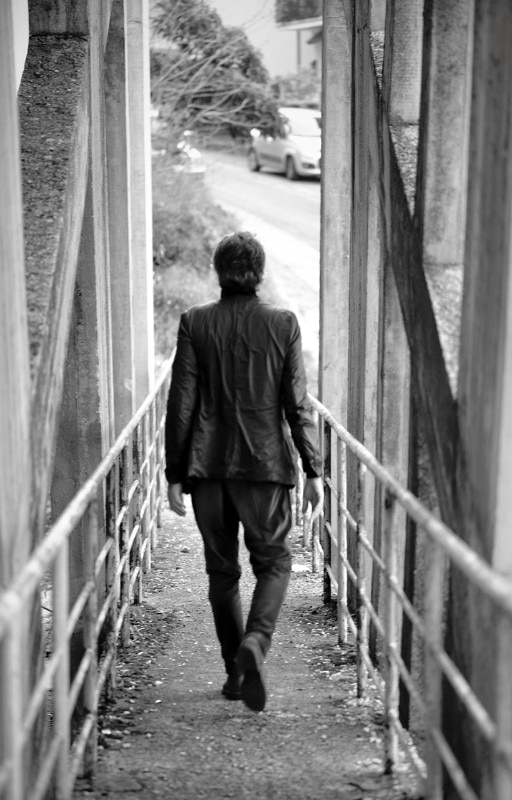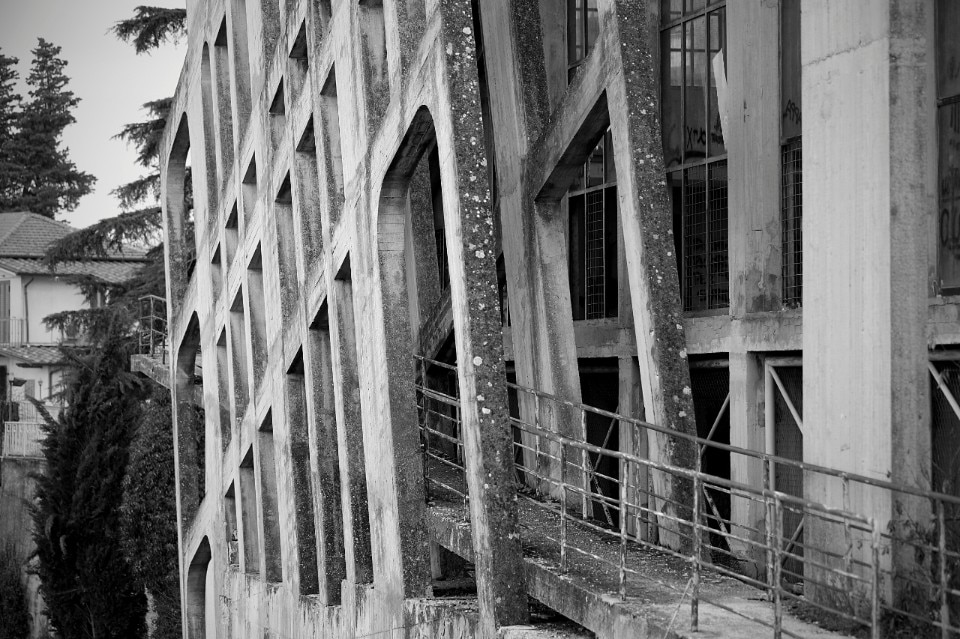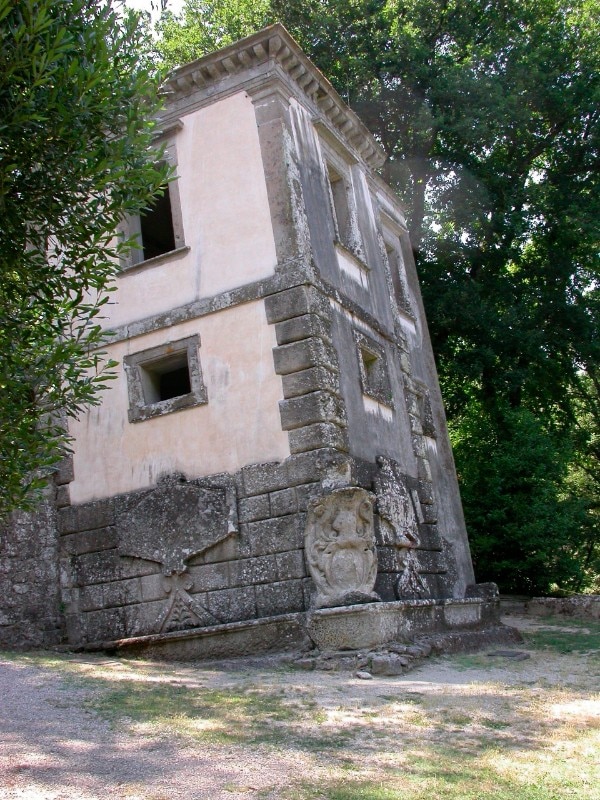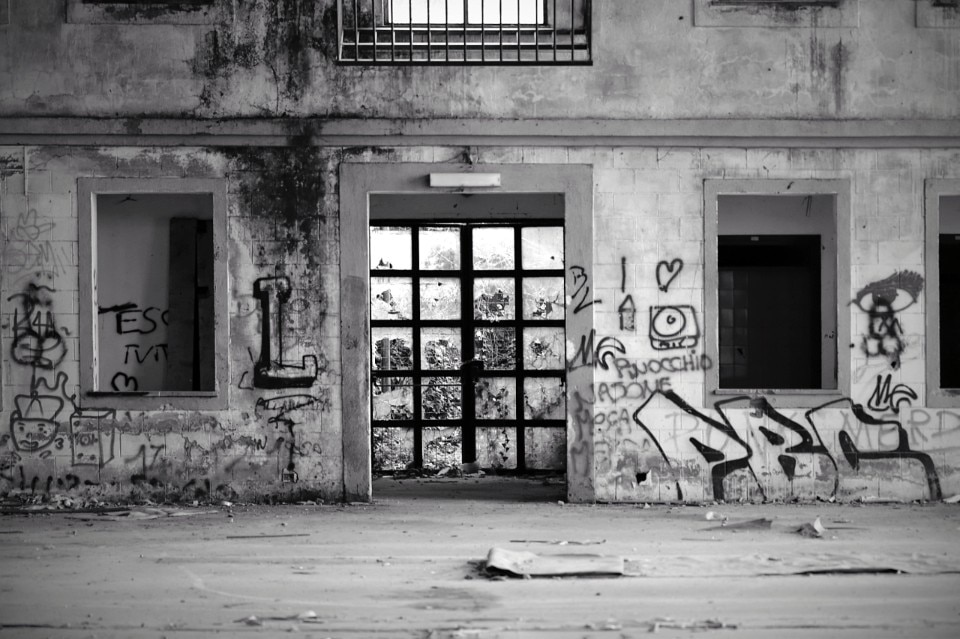This article was originally published on Domus 1076, February 2023.
It could have been a tribute to their generation; it became a symbol of their failure. And of the inability of institutions, elites and intellectuals to understand the value of architecture, which in the impossible equilibrium between memory and the future saves or condemns Italy’s only true treasure. Sentencing it, as Antonio Cederna wrote in 1956, “to the mismanagement of the territory, the decay of cities, the ravaging of nature, the destruction of the landscape and the elimination of the space essential to public health”.
We begin this journey in the centre of Paliano, a small town in the Frosinone area. Here we have to ask several people before we get directions to our destination. After almost fifty years, it remains difficult to find what the FAI considers one of the most extraordinary examples of contemporary art in Italy: Massimiliano Fuksas’s Gymnasium, designed in 1979 and built in the following six years. Something more than just a building put out to tender. A true watershed in the history of Italian architecture, which after almost half a century of neglect remains unique by its elegance and respect, still capable of dominating the Valle del Sacco despite its neglect.

The Gymnasium is surrounded by a provincial road that stretches away into nothingness, not before presenting the spectacle of incredible row houses, all brand new and pastel coloured, whose prototype we had imagined lost. It was published by the then prestigious magazine L’architecture d’aujourdhui, so launching the young Roman architect of Lithuanian-German origins, inviting him to Paris and opening the doors of global fame.
The tilted facade detached from the rest of the building as if toppling into the river betrays a symbolism not difficult to interpret. Fuksas criticised his age and his generation of 1968, which in less than ten years had already burned out and failed, revealing the ideal, cultural, ethical and political inadequacy that it would impose on the country. An inclination, so to speak, opposed and reciprocal to that of the Leaning House of Bomarzo, one of the masterpieces of the Renaissance built a few miles from here in 1547 by the architect Pirro Ligorio to divert Prince Pier Francesco Orsini amid the tedium of life at court. A masterpiece stemming from the ability to shape basalt stone, but even more to create a vision of the world, where nature and artifice, mythological creatures, gods and monsters merge with the human in keeping with an alchemical code. A language partly lost that placed humanity at the centre of the world, which yet remains mysterious and moved by arcane and unknowable powers. Hence needing to be respected.

And in fact, while the great care lavished on the park of Bomarzo elevates the spirit, leaving the visitor feeling involved in a dreamlike, playful and hedonistic world, the state of abandonment of the system of apparently unstable balances in reinforced concrete imagined by Fuksas, opposed to the solemnity of the structure and subverting our perception of it, only instils a sense of dismay. Especially as one walks amid the slides and rides for children positioned on its roof, with access through a small park named after Willy Monteiro. The young man from Paliano was beaten to death two years ago at Colleferro, a few miles from here, by two young brothers who clearly represent the sheer collapse of our Zeitgeist also on the aesthetic level.
And to think that in 2014 the municipal administration announced a competition of ideas to revive the Gymnasium. The winners were Luca Calselli and Giovanni Scaglioni. It seemed an auspicious start. “As the Phoenix is reborn, so, in the third millennium, a hundred years after Futurism, the gymnasium of Paliano will become the manifesto of a new modernity. Not Disappointment and Resignation, but Desire for the Future.” Clearly more than just spelling has gone awry in a region famous for the Bosco, an ancient oak grove covering 30 hectares in a natural setting protected by a regional law.

A wedding gift a hundred years ago from Augusto Gazelli, Count of Rossana, to his daughter Luisa, married to Prince Fulco Ruffo di Calabria, an air ace in World War I awarded the Gold Medal for Valour. The forest was then inherited by Prince Antonello Ruffo di Calabria. He was an outlier amid the aristocracy of his day, a pioneer of environmentalism and the creator of the first Italian ornithological park. Antonello planted three million trees in fulfilment of his caprice: the Selva di Paliano. An oasis of 470 hectares whose heart is the “Bosco di Paliano”.
Today, to reach it and go horseback riding, walking or cycling, you pass by one of the biggest and most important Amazon facilities in Italy, the FC2 plant, which rises where Ciociaria ends and the municipality of Paliano begins. Last October, the news that the starting pay for Amazon logistics employees had been raised to 1,713 euros a month before tax went the rounds in Italy. Gladdening the hearts and minds of workers and the local population, who have no idea what the Fuksas Gymnasium is, or perhaps who Ruffo was.
This is another sign of the times, just as a sign of the times was Orsini’s decision to use sculptural works to create an itinerary with an alchemical matrix and elevate the spirit towards perfection. Entrusting its creation not to Michelangelo, as was long believed, but the less well known Simone Moschino, paying him a fee well above the market rate. He then presented the park to his wife, Giulia Farnese, after whom the grove is named.


